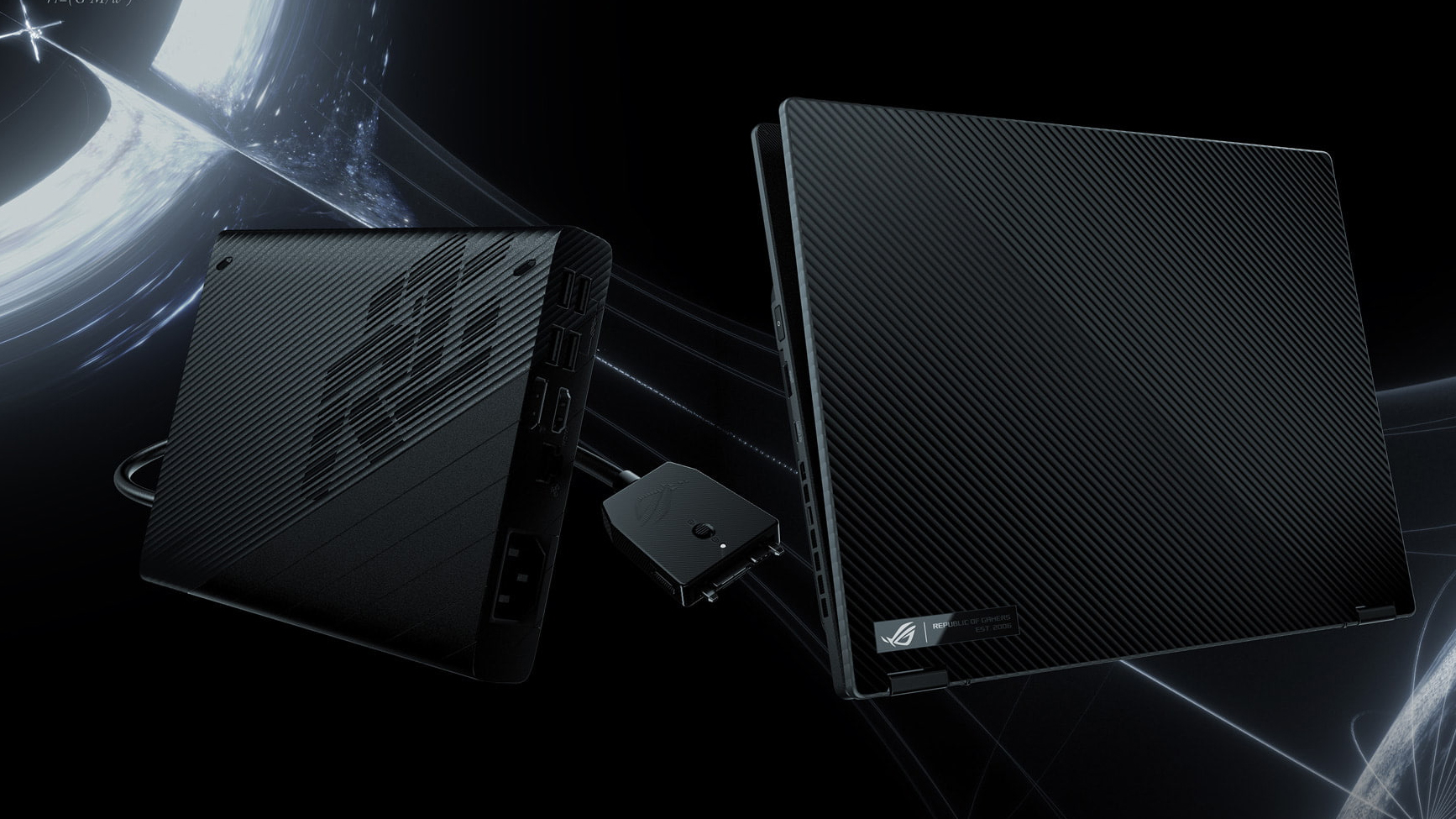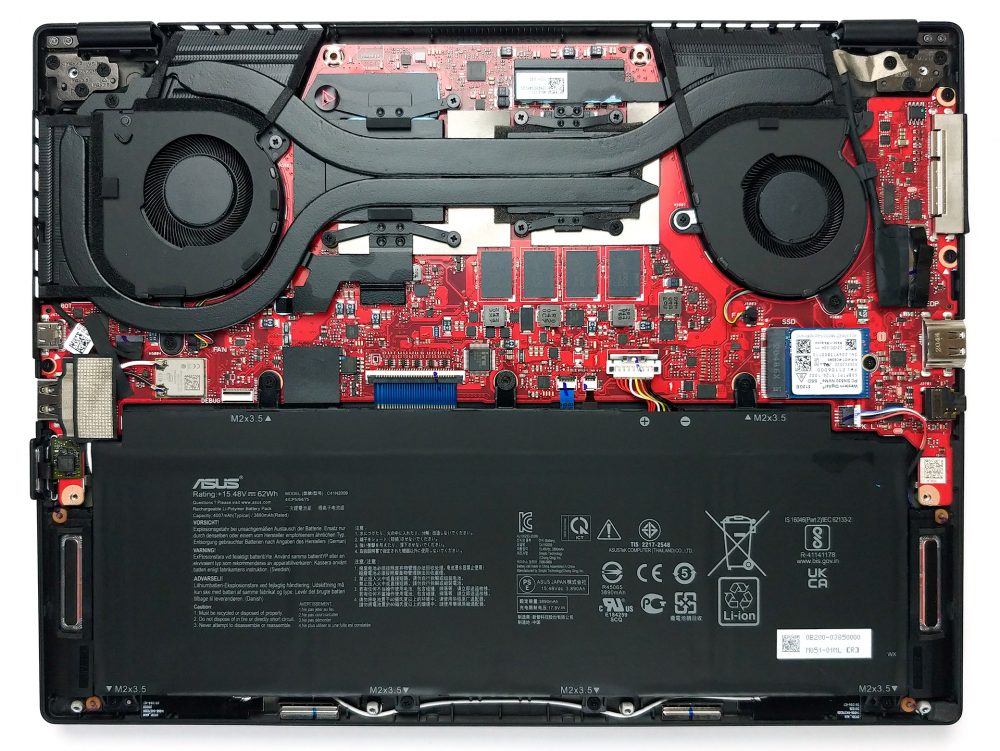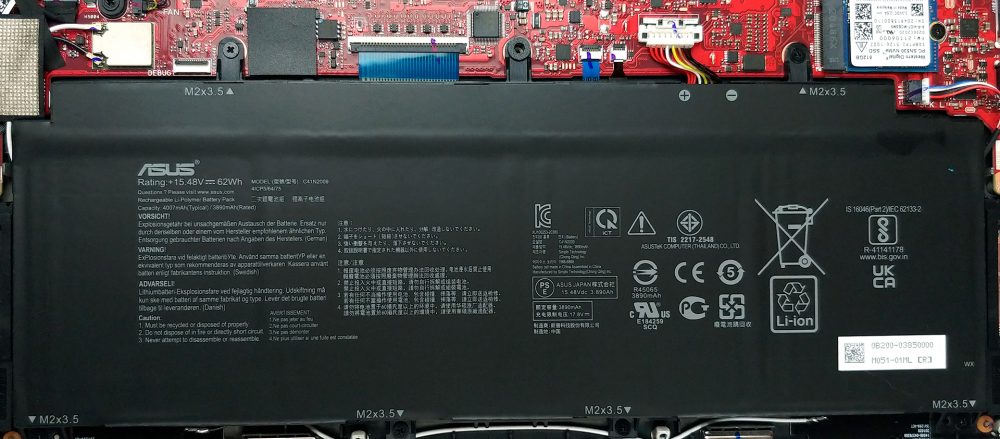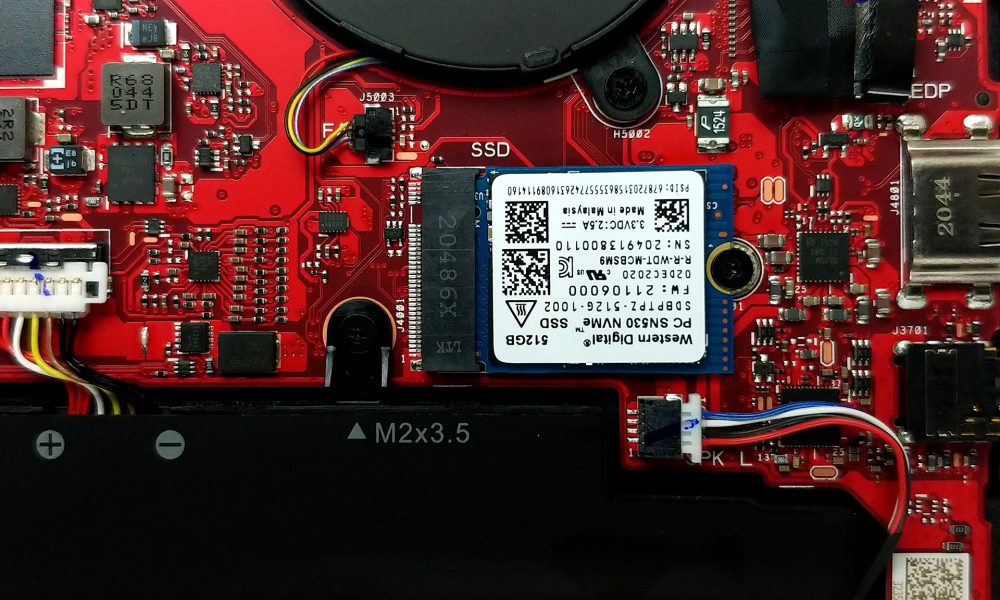Inside ASUS ROG Flow X13 (GV301) – disassembly and upgrade options
Once again, ASUS has been on the front end of innovation at this year’s CES. This laptop has behemoth specs and has the size of a small convertible.
Check out all ASUS ROG Flow X13 (GV301) prices and configurations in our Specs System or read more in our In-Depth review.
1. Remove the bottom plate
There are 11 Phillips head screws keeping the bottom panel in place. After you undo them, pry the panel with a plastic tool and you should be able to lift it from the chassis.
2. Battery
In terms of battery, this laptop is supplied with a 62Wh unit.
3. Memory and storage
Unfortunately, you won’t be able to upgrade the memory on this notebook, as it is soldered to the motherboard. Also, the M.2 NVMe storage slot is a bit too specific – it only fits 30mm drives.
4. Cooling system
Here, we see a cooling solution that consists of two heat pipes, and a total of three heat spreaders. Interestingly enough, ASUS uses liquid metal for the thermal compound of the CPU die.
Check out all ASUS ROG Flow X13 (GV301) prices and configurations in our Specs System or read more in our In-Depth review.
ASUS ROG Flow X13 (GV301 / PV301) in-depth review
At this year's CES (2021), ASUS brought a lot of firsts to the world. It was one of the first manufacturers to introduce a mainstream laptop equipped with the Zen 3 processors, as well as the RTX 3000 series graphics cards. However, one of the notebooks there caught our eye. Although they released a super-powerful ROG Strix G733 and the ROG Zephyrus Duo, we were interested in their smallest challenger - the ROG Flow X13 (GV301). Why? Because, if it's done right, it might revolutionize the market. Not only the gamer one but the entire laptop world, based on very strong foundations.So, what[...]

Pros
- The most powerful convertible on the market
- Decent cooling, considering the size of the laptop
- 16:10 aspect ratio is great for work and the 1200p panel has a 120Hz refresh rate (Sharp LQ134N1JW52)
- Covers 97% of sRGB and our Gaming and Web design profile helps it reach an Average dE of <2.0 (Sharp LQ134N1JW52)
- Doesn't use PWM for brightness adjustment (Sharp LQ134N1JW52)
- Optional RTX 3080 (150W) upgrade with an I/O hub
- Great build quality and revolutionary design
- Very high CPU performance
Cons
- Pricey
- Soldered memory
- Limited I/O and no SD card reader












Stymied from the Get Go, Soldered RAM, why would ASU’s do this, have they no respect for their customers.